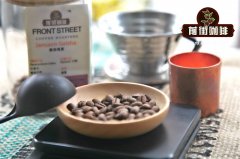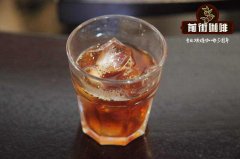How Much Is The Best Coffee Roaster In America

Professional coffee knowledge exchange more coffee bean information please follow the concept of coffee workshop (Wechat official account cafe_style)
Among the factors that affect the taste of a cup of coffee, raw beans account for 60%, roasting accounts for 30%, and extraction accounts for 10%. Good roasting can maximize the personality of raw beans and minimize the occurrence of defective flavor. so it is particularly important to choose a high-quality coffee bean roaster brand. There are three kinds of coffee roasters on the market: 1. Hot air coffee bean roaster.
The hot air type bean dryer uses the blower to absorb the air, and then let the air pass through a heating coil to raise its temperature. Hot air is used as a heating source to bake coffee beans. Hot air can not only provide the temperature needed for baking, but also use the power of airflow to stir coffee beans, killing two birds with one stone.
Advantages: high thermal efficiency, fast heating, relatively uniform heating of raw beans, easy to control.
Disadvantages: because of the high heating efficiency, it is easy to lead to excessive heating, resulting in beans "entrainment", and too high temperature is easy to make the caramelization reaction is not sufficient.
Taste characteristics: the acidity is obvious, the taste is relatively clean and simple, but the taste is not rich enough and lacks depth, and deep baking is easy to produce irritating taste. 2. Direct-fired coffee bean roaster
As the name implies, the direct fire is to heat the coffee beans directly with a flame. Up to now, the "fire" of direct fire not only includes general flame (including gas furnace fire and charcoal fire), but also includes infrared and electric heating pipe.
Advantages: the baking time is long, so the caramelization reaction is sufficient and the flavor is rich.
Disadvantages: it is easy to cause uneven baking, and if the heat is not well controlled, it is also easy to scorch coffee beans and form a scorched bitter taste. 3. Semi-direct fire and semi-hot air coffee bean roaster
The baking method, which combines the advantages of direct fire and hot air, is the mainstream of commercial baking machines at present. Semi-direct-fire baking is actually similar to direct-fire baking, but because there are no holes in the outer wall of the baking container, the flame will not directly touch the coffee beans. In addition, a ventilation device is added to introduce the hot air from the outside of the baking container into the baking room to improve baking efficiency. Another function of this ventilation device is to suck out the exfoliated silver skin (the film attached to the outer layer of coffee seeds). Prevent the silver skin from burning because of high temperature in the baking room, thus affecting the taste of coffee beans. Some of the so-called charcoal-roasted coffee is to help prevent the discharge of silver skin and make the coffee beans smell of smoke.
Semi-direct fire semi-hot air machine has the advantages and disadvantages of both direct fire type and hot air type, but its heating mode is changed according to the adjustment of hot air and boiler speed. The larger the hot air, the faster the speed is, the closer it is to the hot air type; on the contrary, the closer it is to the direct fire type. 1. Very shallow baking (LIGHT Roast): the degree of baking; very shallow baking, also known as shallow baking. The lightest roasting degree of all roasting stages, the surface of the coffee beans is a light cinnamon color, its taste and aroma are insufficient, this state is almost undrinkable. It is generally used for testing and seldom for tasting.
2. Shallow baking (CINNAMON Roast): baking degree; shallow baking, also known as cinnamon baking. The general baking degree, showing cinnamon color on the appearance, the smell of green has been removed, the aroma is OK, and the acidity is strong, which is a common roasting degree of American coffee.
3. MEDIUM Roast: degree of baking; moderate baking, also known as micro-baking. Medium baking heat and light baking are both American, in addition to sour taste, bitterness also appears, the taste is good. It has moderate aroma, acidity and mellowness, and is often used in the baking of mixed coffee.
4. Medium baking (HIGH Roast): baking degree; moderate micro-deep baking, also known as concentration baking. Belongs to the moderate micro-deep baking, the baking degree is slightly stronger than the slight medium baking, the surface has appeared a little thick brown, the bitterness also becomes stronger. Coffee tastes sour and bitter, with good aroma and flavor, and is most often loved by people in Japan and Central Europe. (blue Mountain Coffee)
5. Medium-deep baking (CITY Roast): baking degree; medium-deep baking, also known as urban baking. The most standard degree of roasting, bitterness and acidity are balanced and are often used in French coffee. (Brazil, Colombia)
6. Deep baking (FULL-CITY Roast): baking degree; micro-depth baking, also known as deep city baking. The baking degree is slightly stronger than the medium depth, the color becomes quite dark, and the bitter taste is stronger than the sour taste. It belongs to the Central and South American baking method, which is very suitable for preparing all kinds of iced coffee.
7. Deep baking (French Roast): degree of baking; deep baking, also known as French baking. Also known as French or European baking, belongs to deep baking, the color is thick brown with black, sour taste can not be felt, especially in Europe, France is the most popular, because the fat has infiltrated to the surface, with a unique flavor, very suitable for coffee Oulei, Viennese coffee. Extraction accounts for 10%, good roasting can maximize the personality of raw beans and minimize the occurrence of defective taste, so it is particularly important to buy high-quality coffee bean roaster brands. Among the factors that affect the taste of a cup of coffee, raw beans account for 60%, roasting accounts for 30%, and extraction accounts for 10%. Good roasting can maximize the personality of raw beans and minimize the occurrence of defective flavor. so it is particularly important to choose a high-quality coffee bean roaster brand.
Important Notice :
前街咖啡 FrontStreet Coffee has moved to new addredd:
FrontStreet Coffee Address: 315,Donghua East Road,GuangZhou
Tel:020 38364473
- Prev

A comparison between Tibika and Katim's good Tibica and Yunnan Katim Coffee
Professional coffee knowledge exchange more coffee bean information please follow the coffee workshop (Wechat official account cafe_style) the origin of coffee is mainly divided into these stories 1. Legend of the shepherd (sheep danced crazily after eating coffee beans) 2. Legends of singing birds (birds keep singing after eating) 3. Legends of medieval monks 4. Eat fruit and dance legends. To say that these are legends, because in the right of history
- Next

Knowledge about coffee grinder which kind of electric grinder is recommended
Professional coffee knowledge exchange more coffee bean information Please pay attention to the advantages and disadvantages of the flat knife in the coffee workshop (Wechat official account cafe_style): the flat knife grinder is composed of the upper and lower cutter head, and the base is fixed on the motor. When the motor starts, it rotates the upper and lower cutter head to produce cutting action. When the coffee particles fall from the middle, the knife plate rotating at the bottom will spin the coffee beans to the outside and turn the coffee.
Related
- Beginners will see the "Coffee pull flower" guide!
- What is the difference between ice blog purified milk and ordinary milk coffee?
- Why is the Philippines the largest producer of crops in Liberia?
- For coffee extraction, should the fine powder be retained?
- How does extracted espresso fill pressed powder? How much strength does it take to press the powder?
- How to make jasmine cold extract coffee? Is the jasmine + latte good?
- Will this little toy really make the coffee taste better? How does Lily Drip affect coffee extraction?
- Will the action of slapping the filter cup also affect coffee extraction?
- What's the difference between powder-to-water ratio and powder-to-liquid ratio?
- What is the Ethiopian local species? What does it have to do with Heirloom native species?

